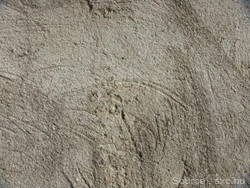Your home is built on a foundation. If the foundation is shaky, your whole home will be shaky. That's why most states require licensed contractors to carry out the precise and difficult work of laying down a foundation. There are three kinds of foundations. This article will give you some background on each one so you know what to expect when it comes time to build one.
Slab

A slab foundation is more or less what it sounds like: a flat sheet of concrete that sits on top of the ground. In places where the ground is level, this is the easiest option. Contractors tend to avoid these foundations in areas with cold winters, though. The freezing and thawing of the ground can cause damage or shifting.
The general layout is like this: there is a trench around the edges of the slab that is about 2 feet deep, which is filled with concrete to keep the foundation in place. There is usually a layer of gravel below the 4-6 inch slab itself. Additional steel beams and wire mesh are usually used in conjunction with the concreted to give everything even more stability.
Basement
Everyone knows what a basement is, but maybe you didn't know that it's the foundation of your home as well as the place you put things you don't need all the time. Basement foundations are generally the most expensive, and many builders follow a three-part pouring technique that helps keep the basement waterproof. First the hole for the basement is dug, about 8 feet deep. Next, the masons pour "beams," which are like the outline of the basement floor. Then when those harden, the walls are poured. Lastly, the floor is poured within the walls and on top of the beams, providing a more waterproof seal.
Crawlspace
This type of foundation has many of the benefits of a basement with the affordability of slab foundations. The obvious drawback is that, compared to a basement, there is not much storage room in a crawlspace, nor could you refinish one to serve other functions. They do, however, keep your house up off the ground, where it is safer from moisture and termites, and allow for piping to run much easier to the house. This also makes plumbing work much easier down the road.
Crawlspace foundations generally have a concrete or cinderblock base with brick facing to look nicer. They, like basements, usually have a drainage system set up to keep from getting damp.Your foundation is the beginning of your home. A bad beginning will probably bring about a bad finished product. Happily, the reverse is true as well. Make sure you do the appropriate legwork when you hire a contractor for this important job.